- 21 Nov 2024
- 11 Minutes to read
- Print
- PDF
Remote Cast for Mac Devices
- Updated on 21 Nov 2024
- 11 Minutes to read
- Print
- PDF
Scalefusion supports remote device troubleshooting on its managed Mac devices through its Remote Cast and Control feature. The feature allows the active device screen to be shared between the device user and the IT admin wherein the latter can direct, guide and assist the user to resolve a specific device issue or to raise a ticker for further escalation.
As a result, the Remote Cast & Control feature offers a number of benefits. To name a few:
IT Admins can easily troubleshoot any problems faced by end users on their Mac devices remotely.
Educational institutions can conduct guided sessions
In the document, we will describe how Scalefusion's Remote Cast & Control feature is implemented and works on managed Mac devices.
Prerequisites
Mac OS version: The minimum version should be 10.14 or above.
The device should be enrolled with Scalefusion.
Browser: Chrome is recommended browser (on Scalefusion Dashboard) for smooth running of Remote Cast & Control feature on Mac devices
Make sure that you have either an Enterprise Plan subscription or if you are IN-Trial then you have requested access for this feature.
Setup
Step 1: Install & Setup Remote Support app
The first step to use Remote Cast & Control on Mac devices is to install & setup the Remote Support app. The app acts as a primary entity which authenticates user’s device and Remote Cast & Control Session. Please follow the steps below to install:
Navigate to Application Management > Scalefusion Apps. Click on Remote Support App for Mac and select PUBLISH
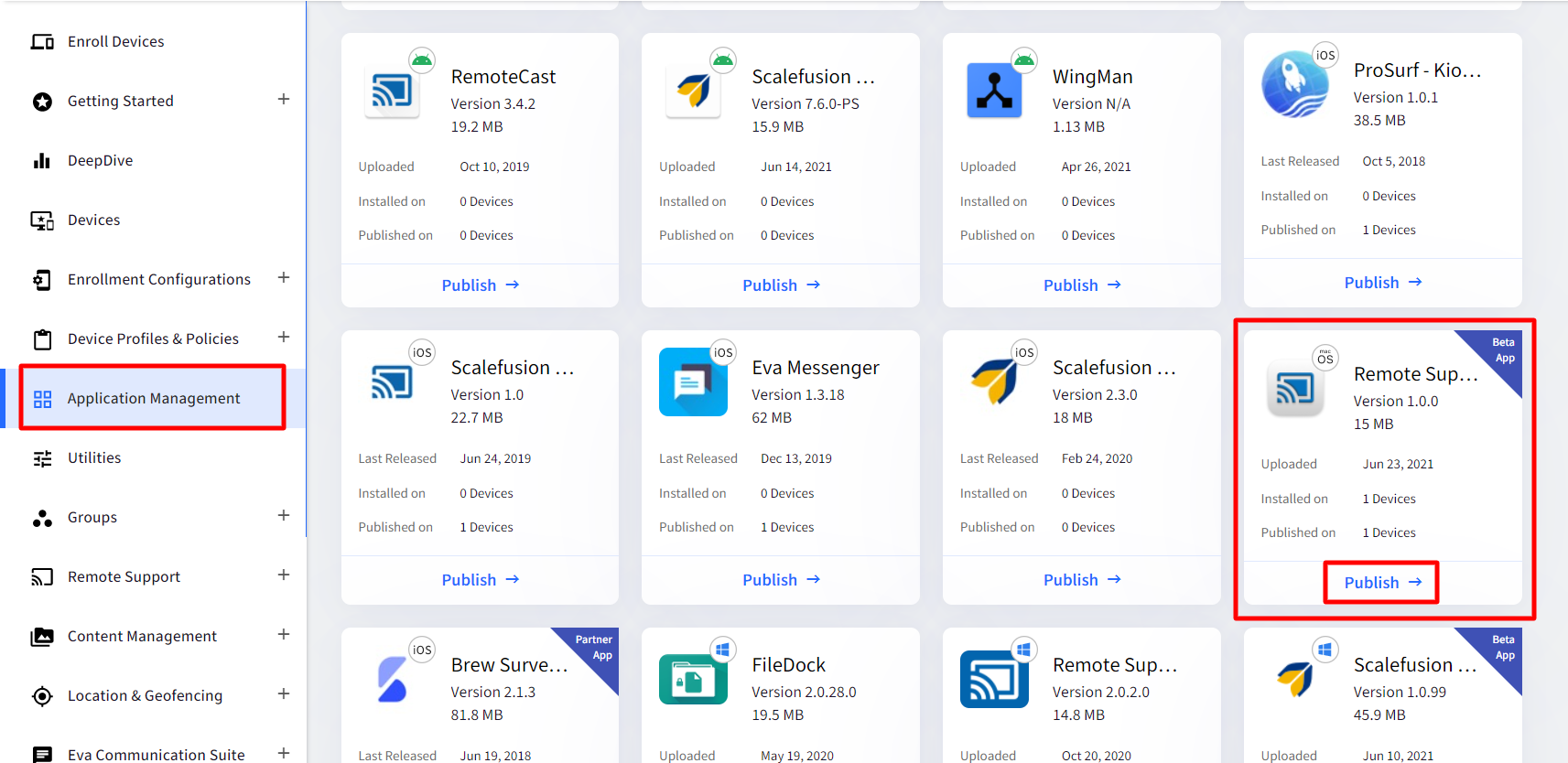
In the right side panel, click on Publish. In the window, select the Mac Device profiles on which you want to install the application. Click on PUBLISH to confirm the installation.
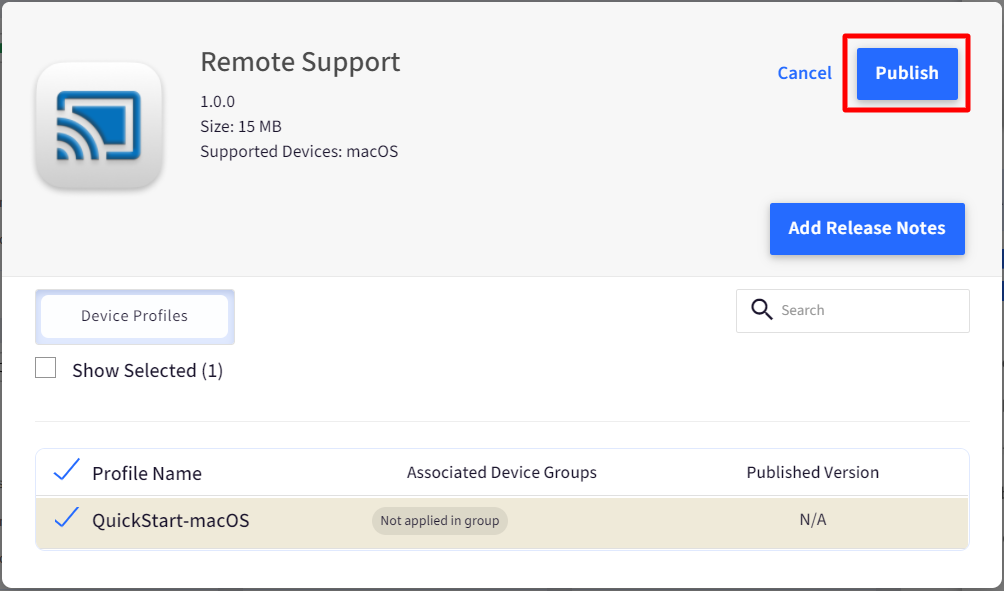
It will take few minutes for the app to get downloaded and installed.
Step 2: Granting Permissions on Mac Device
When the Remote Support application is installed on the device and the user launches the Remote Support app, authentication takes place. The authentication is in regards to device being enrolled with Scalefusion or not. If not, an authentication failure message will display.
Once the authentication is successful, the next step is to grant necessary permissions
Click on Grant Permissions button

The Notification and Accessibility permissions will be automatically granted.
Screen Recording Permissions: By granting this permission admin can record the session. You get the screen that describes how to Grant Screen Recording Permissions which enables it during Remote Support session.
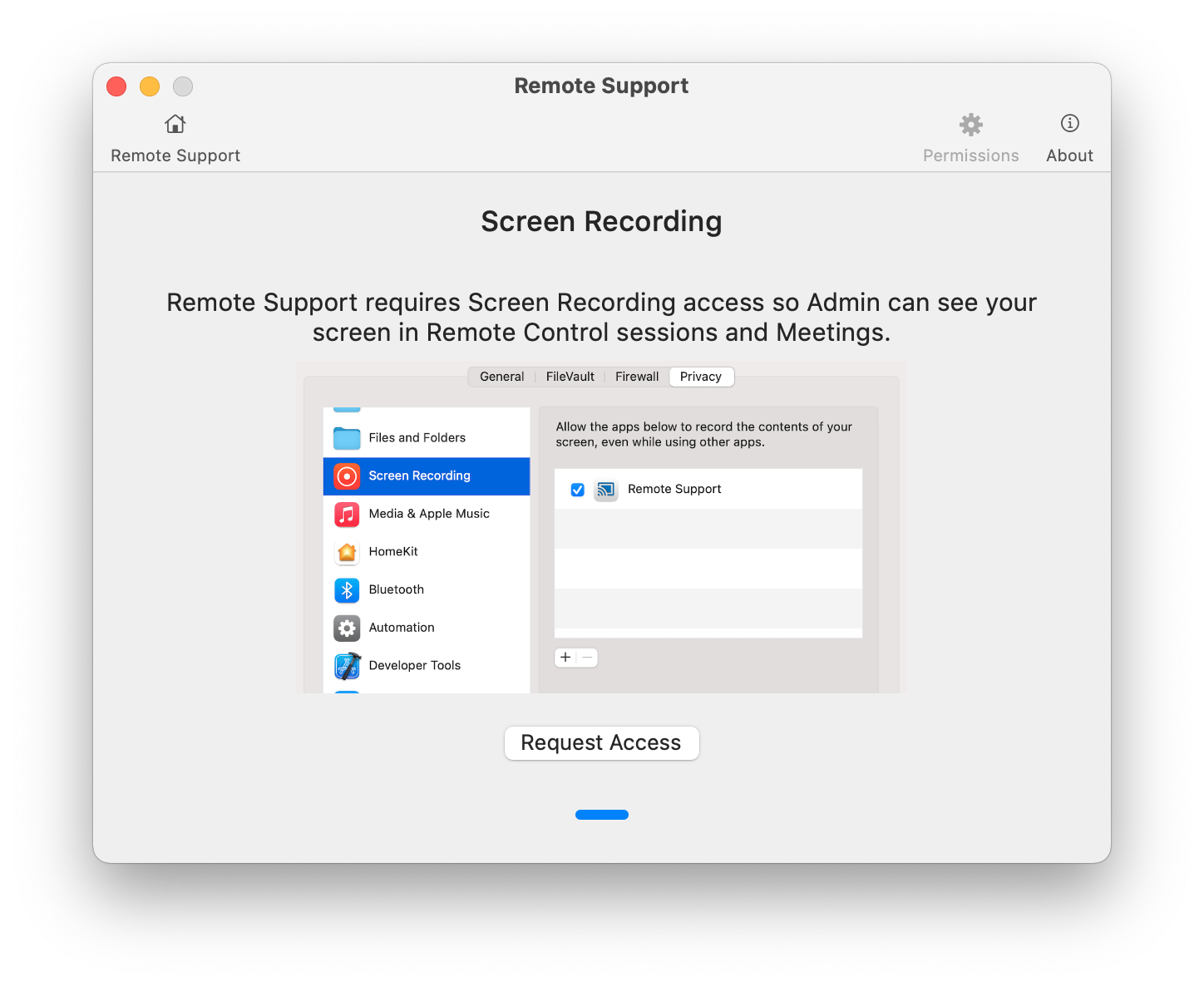
Clicking Request Access will take you to System Preferences where you need to enable Remote Support under Screen Recording.
Step 3: Initiating a Remote Cast Session
Once you have setup the Remote Support application and granted permissions as described in Step 1 and Step 2, follow the steps below to initiate a remote casting session.
Navigate to Remote Support> Remote Cast & Control on the Dashboard. It will show you the list of devices. Click on Start Session option next to the Mac device you want to start a screen sharing session with.
The Remote Control column indicates if the device supports remote control feature or not. A cross (X) indicates that the device does not support and a tick (V) mark indicates that the device supports control.
A Remote Cast session can also be initiated from Device Details page. On Device Information card there is a shortcut icon for Remote Cast before the Gear icon, clicking on which directly takes you to the Start session screen.
You will be navigated to the screen casting page with the following components,
Cast Console: The area where the mirrored screen appears.
Session Details: Displays the Mac device name and model with which the session will happen
CREATE TICKET: Create a Service Desk ticket - Supported only if you have integrated your ITSM tool.
Start Session: Click on this button to start the session.
Start File Sync: Use this for file management with the remote machine by downloading, uploading, deleting files from the machine.
Start Recording: Use this option to start recording the session once it is started.
Click on START SESSION to start the session.
When a remote support session starts, the wallpaper turns to grey and all other open applications on the device are minimized
Actions during ongoing session
Once remote session initiates, the screen that is currently running on the end user's device will be shown on the Scalefusion dashboard. The actions that can be performed during an ongoing session are,
Remote Control: The admin gets complete control of user's device, click anywhere on the screen, access apps etc. and perform required checks on user's device, all remotely.
Full Screen: Use this option to go full screen.
Take Screenshot: Use this option to take a screenshot of the shared screen.
Stop Session: Use this option to stop the session.
Start Recording: Use this option to start recording the session once it is started. After the session stops, the recording gets downloaded and can be accessed later.
Device Level Actions: During remote session if admin wants to perform certain actions on the end user's device, they can do it from the same screen. Clicking on Settings button (next to full screen) pulls a menu with following actions to choose from:
Refresh device
Reboot Device
Full Device Info
Lock Screen: This will lock the macOS device with the PIN number configured. Use this option if the Mac machine is lost or misplaced. You can optionally set a lock screen message and a phone number
Unlock Device
Shortcut keys: Scalefusion supports few keyboard shortcut Keys which can be used during remote sessions for troubleshooting. This also eases Admin's job. To use keys, click on the keyboard icon. This pulls up a menu with following key combinations:
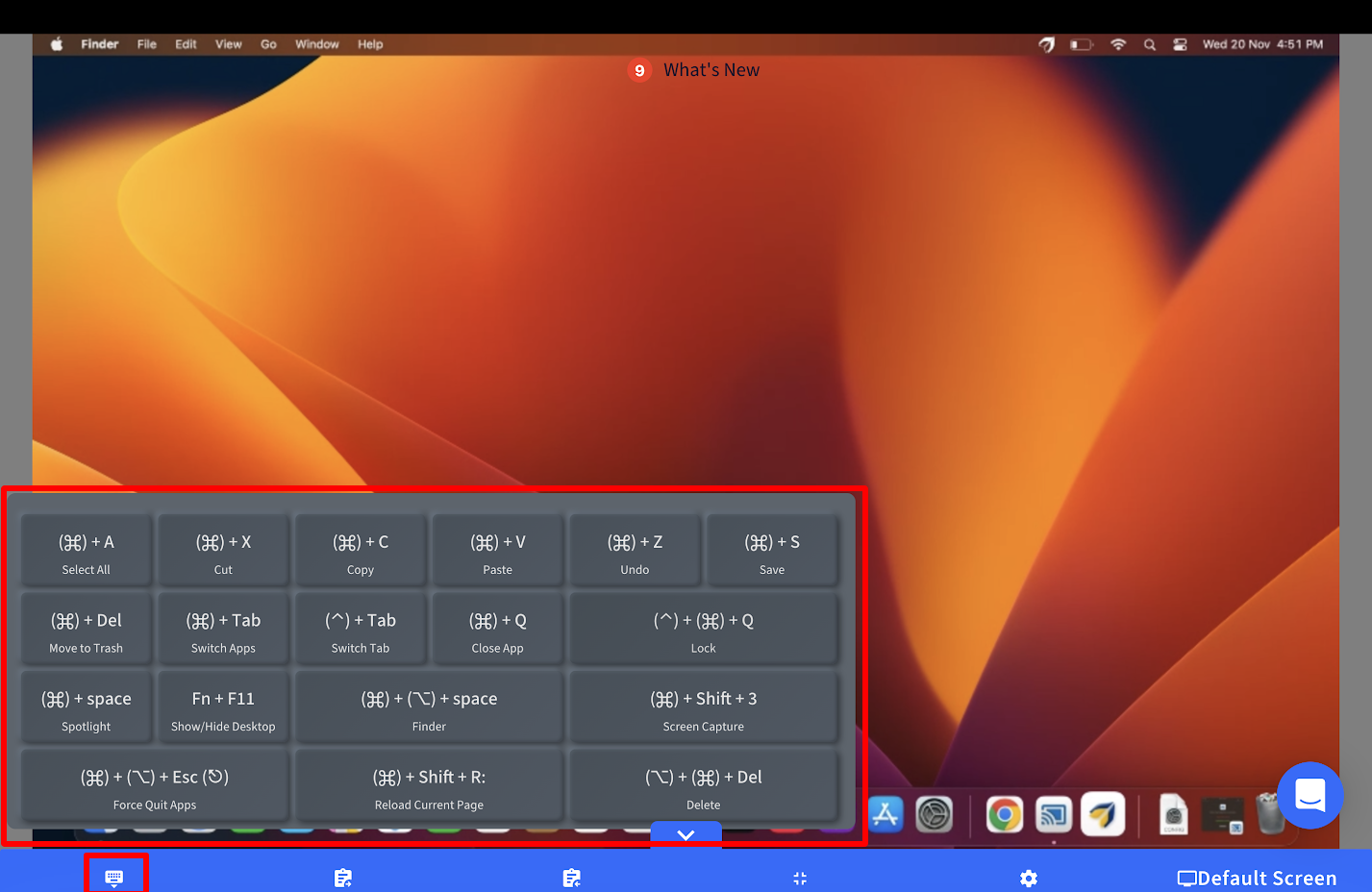
Command (⌘) + A: Select All
Command (⌘) + X: Cut
Command (⌘) + C: Copy
Command (⌘) + V: Paste
Command (⌘) + Z: Undo
Command (⌘) + S: Save
Command (⌘) + Delete : Move to Trash
Command (⌘) + Tab: Switch Apps
Control (⌃) + Tab: Switch Tab.
Command (⌘) + Q: Close App
Control (⌃) + Command (⌘) + Q: Lock
Command (⌘) + Space : Spotlight
Fn + F11 : Show/Hide Desktop
Command (⌘) + Option (⌥) +Space : Finder
Command (⌘) + Shift + 3: Screen Capture
Command (⌘) + Option (⌥) + Escape (⎋): Force Quit Apps
Command (⌘) + Shift + R: Reload Current Page
Option + Command (⌘) + Delete: Permanent Delete
Other than Command+C and Command+V, Admins can use the key combinations only to perform operations on the end user's machine during a remote session.
For performing operations (copy and paste) from your machine over end user's machine or vice-versa, you can use Clipboard feature.
Mouse Scrolling (when in full screen) and dragging can also be done on the target machine during a remote session.
Switch between multiple Monitors: IT Admins can switch between multiple monitors during a remote support session. If there are multiple monitors connected, then there will be an additional option on the action/blue bar at the bottom which would allow you to switch between Default and the other monitors.
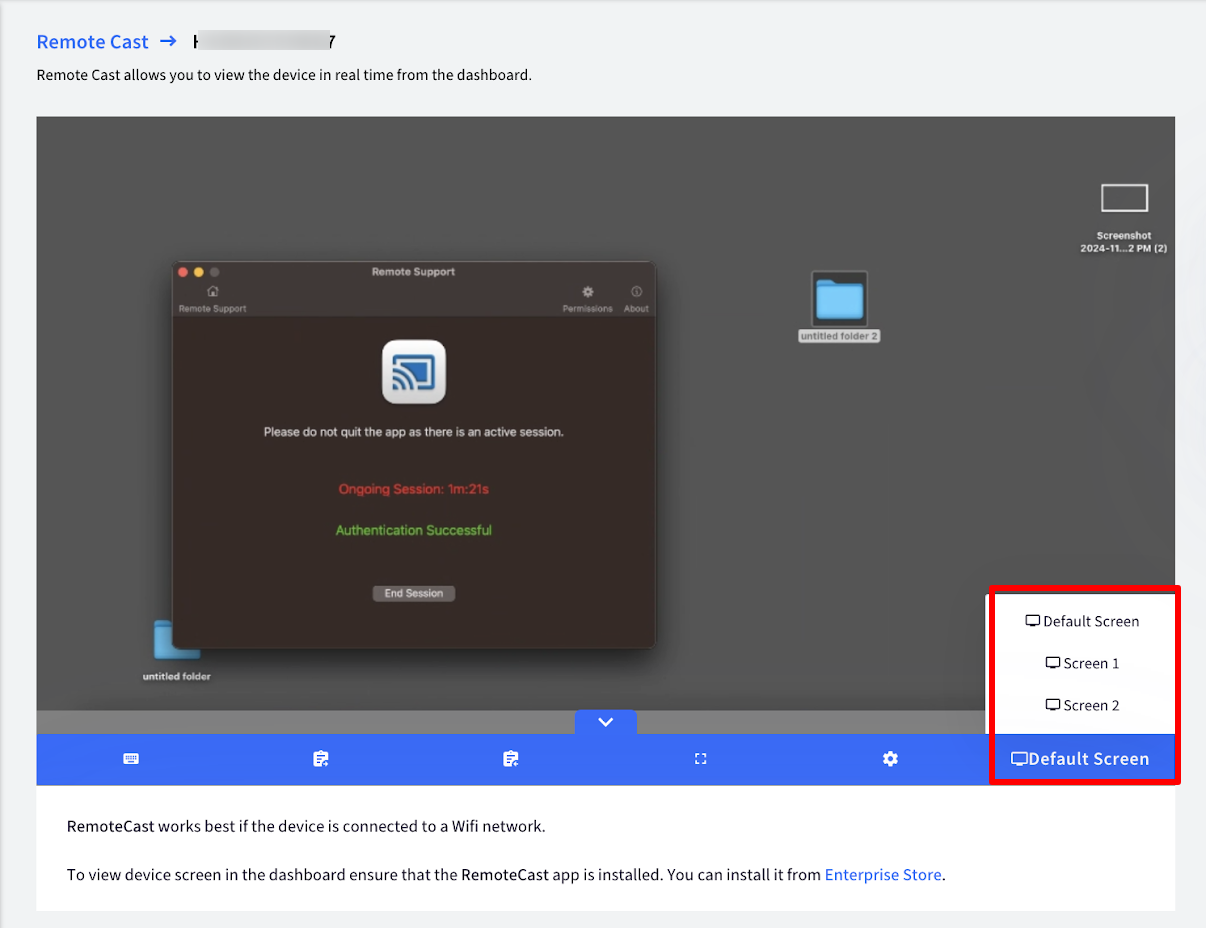
Clipboard: With this you can copy and paste text from your device to remote device and vice-versa, during a remote session. There are two buttons provided to use Clipboard:
Send to Device Clipboard: Used to copy and paste text from your device to remote device
Receive from device Clipboard: Used to copy and paste text from remote device onto your device
Both mouse (right click to copy or paste) and keyboard shortcuts (Command+c and Command+v) can be used for using clipboard actions
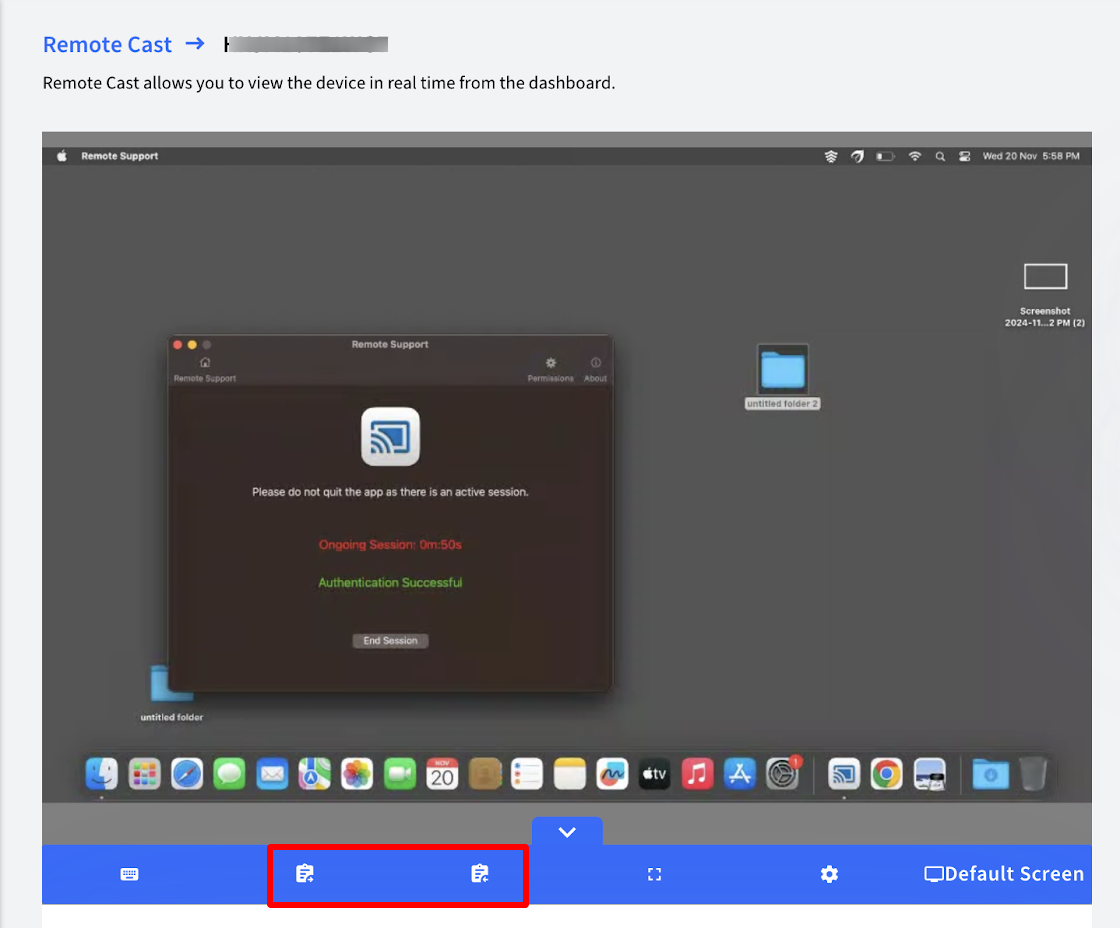
Additional Settings
When Remote Cast is used in security and privacy concerned domains like tablets with kids or with people in hospital care, if somebody takes a remote cast session, companies normally want to enforce recording of that session as a checkpoint for the agent taking the RCC session to make sure that everything is recorded.
To enable this, following additional settings have been provided that can be configured before starting or during a remote cast session and can be used as global settings for all admins.
To implement these settings, please ensure you have Scalefusion Remote Cast & Control for macOS with v2.0.0 or above
From Dashboard
Navigate to Settings button available under Remote Cast & Control on Scalefusion Dashboard.

Clicking on Settings opens a dialog box where admins can configure them.
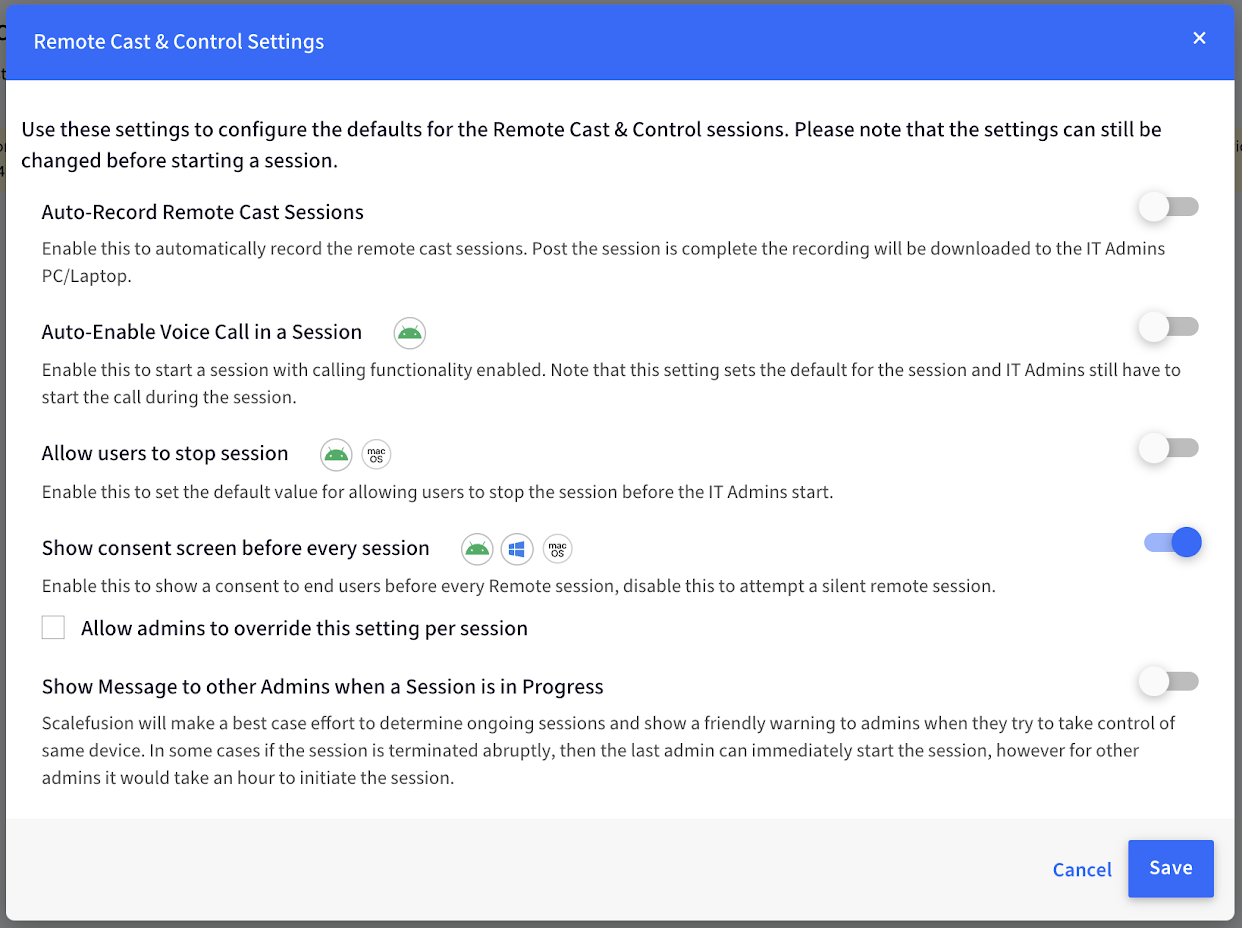
Following settings are configurable for MacOS devices:
Auto-Record Remote Cast sessions.Enabling this automatically records the remote cast sessions. After the session is completed the recording gets downloaded to the IT Admins PC/Laptop. If this setting is ON, session recording cannot be stopped.
Allow Users to stop session. This setting when enabled allows users to stop the session from their end. On Remote Cast app's main screen, the users will get the following screen (shown below) and they can click on End Session button to stop the session.
Show Message to other Admins when a Session is in Progress: If this setting is enabled, IT admins get an alert when another admin tries to take access of a device that already has an ongoing session. In some cases if the session is terminated abruptly, then the last admin can immediately start the session, however for other admins it would take an hour to initiate the session.
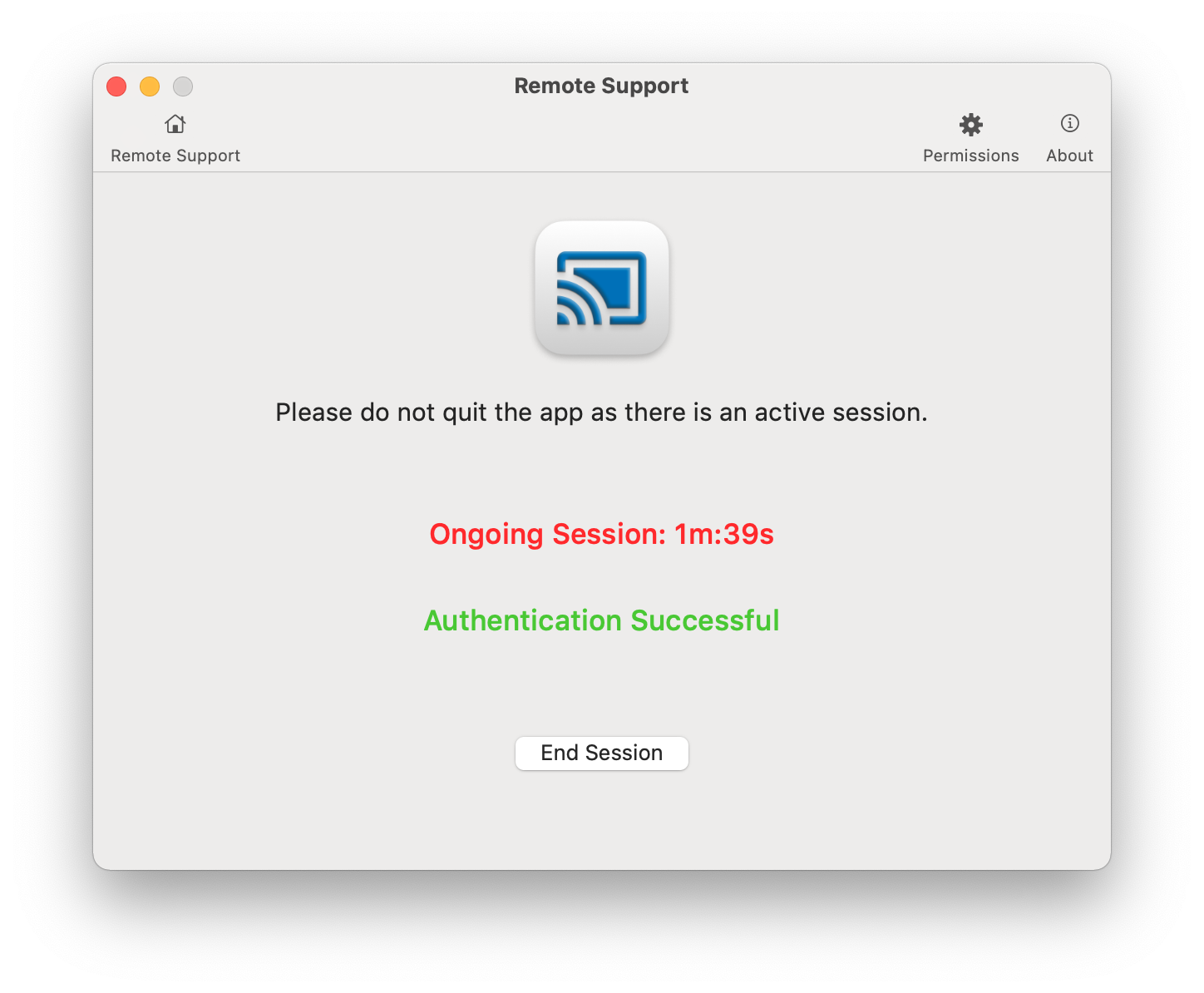
Show consent screen before every session.Enable this setting to get user's consent before starting a remote cast session, else the session starts directly. The user gets a popup before the start of the session. Clicking on Start now starts the session.
Allow Admins to override this setting per session: If this is also selected, admins can enable/disable the toggle to Show consent on the dashboard, for each device when session is initiated.
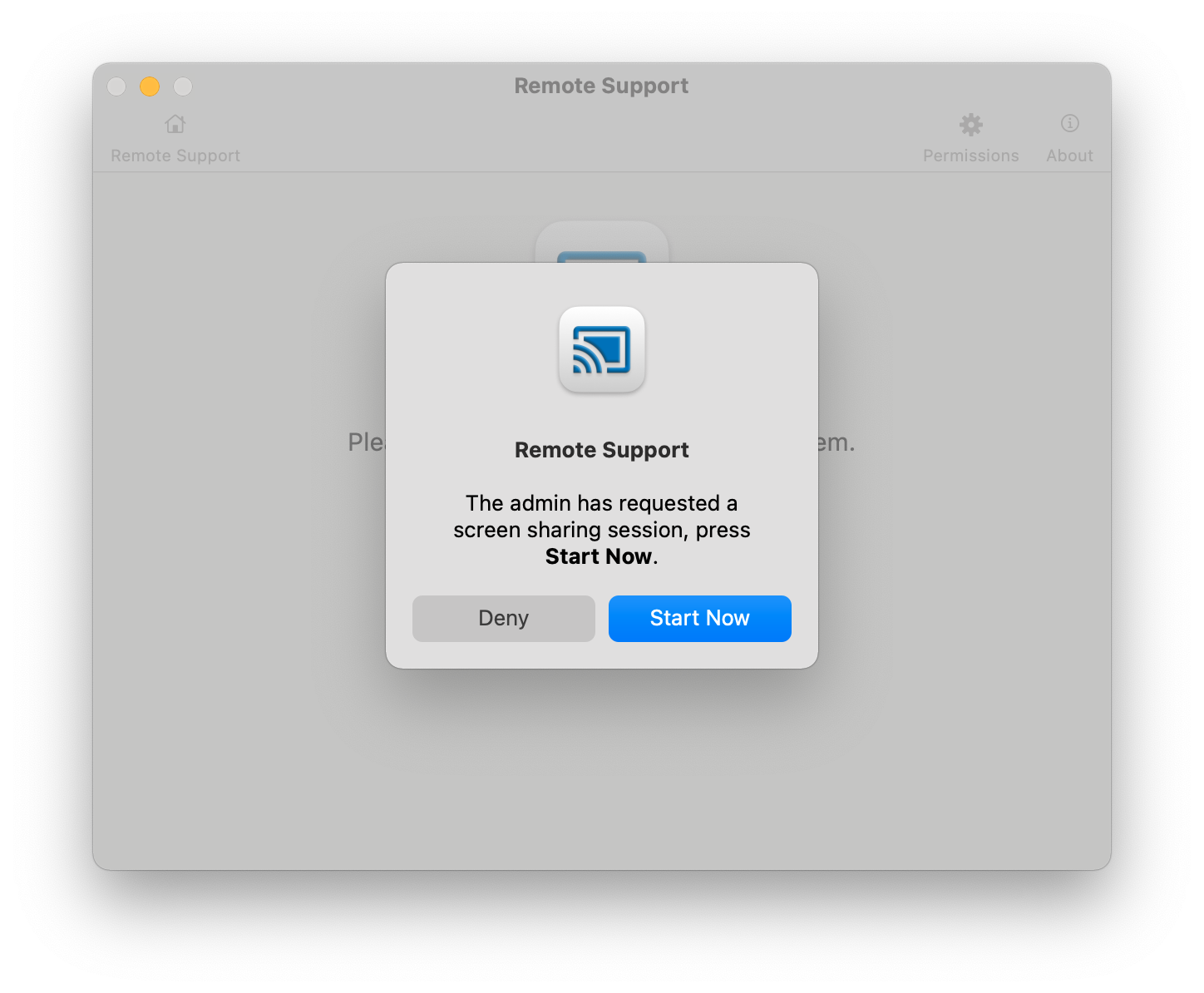
This setting can also be enabled by the admin from Dashboard as soon as session is initiated. On the right of the screen there is a toggle Show Consent to enable this.
Other
Switch user during an active (ongoing) session
Admins can switch from one user to another during an ongoing session without end user's intervention. For this, the fast user switching must be enabled on the user account from which the switch is being attempted. Following settings are to be configured to achieve this:
On the user device, navigate to System Preferences > Control Center > Fast user Switching. Here,
In Show in Menu Bar select any one option from the drop-down for how it should be shown on the menu bar
Toggle on Show in Control Center
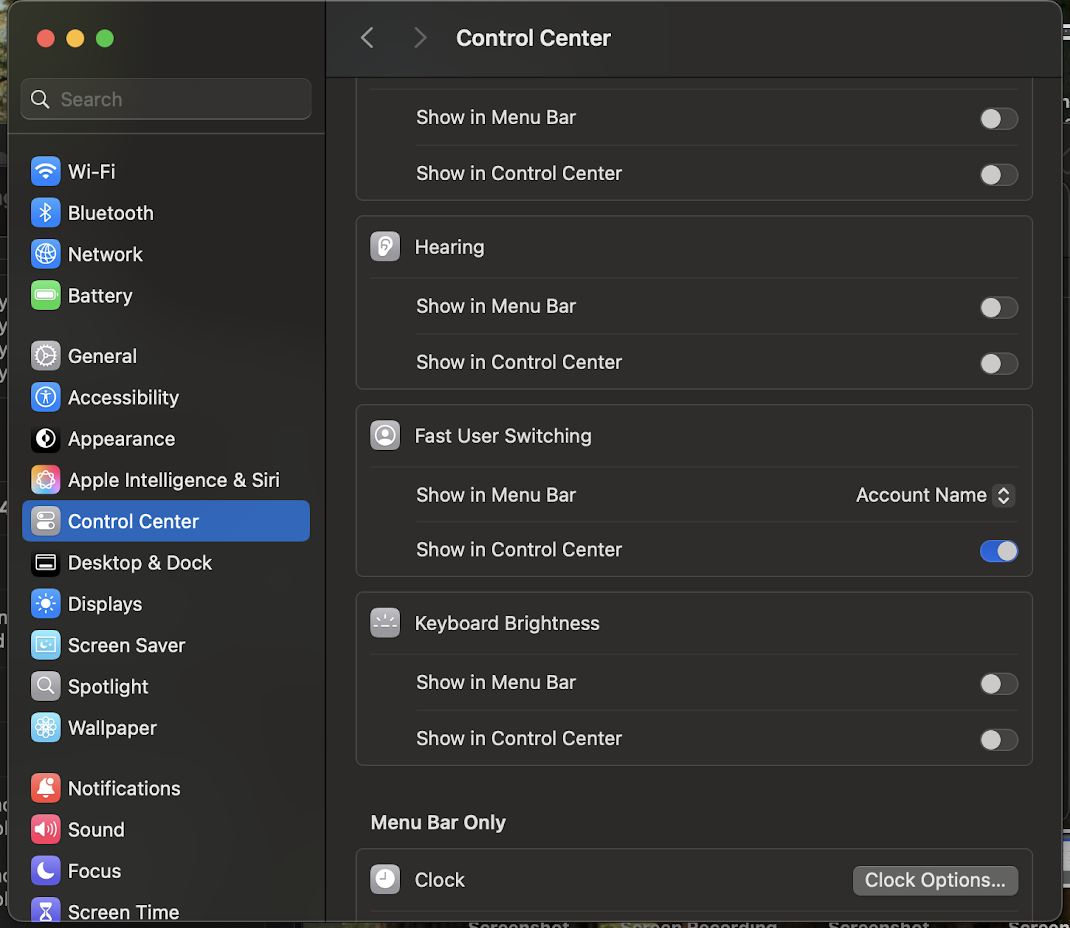
Now, during the Remote Cast session admin can click on the fast switching option location on the top right hand side of the menu bar to select any user to switch to.
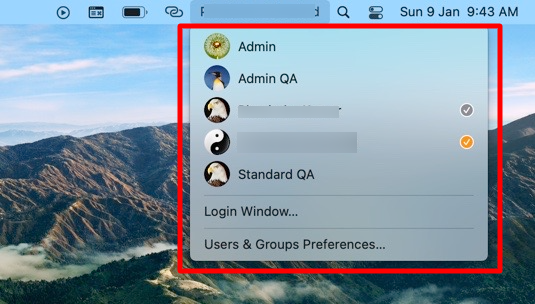
The remote session will get switched to the selected user.
Admin can choose to log out and switch user as well but the screen sharing will be paused and the end user has to manually switch the user account upon which the screen sharing will be resumed.
Known Behavior
If admin is using a windows machine for initiating a remote session, then they have to use "Control" Key on their keyboard in order to initiate "Command" key on Mac.
Frequently Asked Questions
Question: I have started session from dashboard but the remote session has not started on the device yet. What can be the reasons?
Answer: If the session does not start on the device side the push notifications may not be getting delivered on macOS devices. Hence, to make the app listen to incoming requests proactively and respond, please perform one of the following:
Launch the Remote Support application on the device.
If the app is already launched, then verify if the Check Now button is enabled. If it is enabled, click on it.
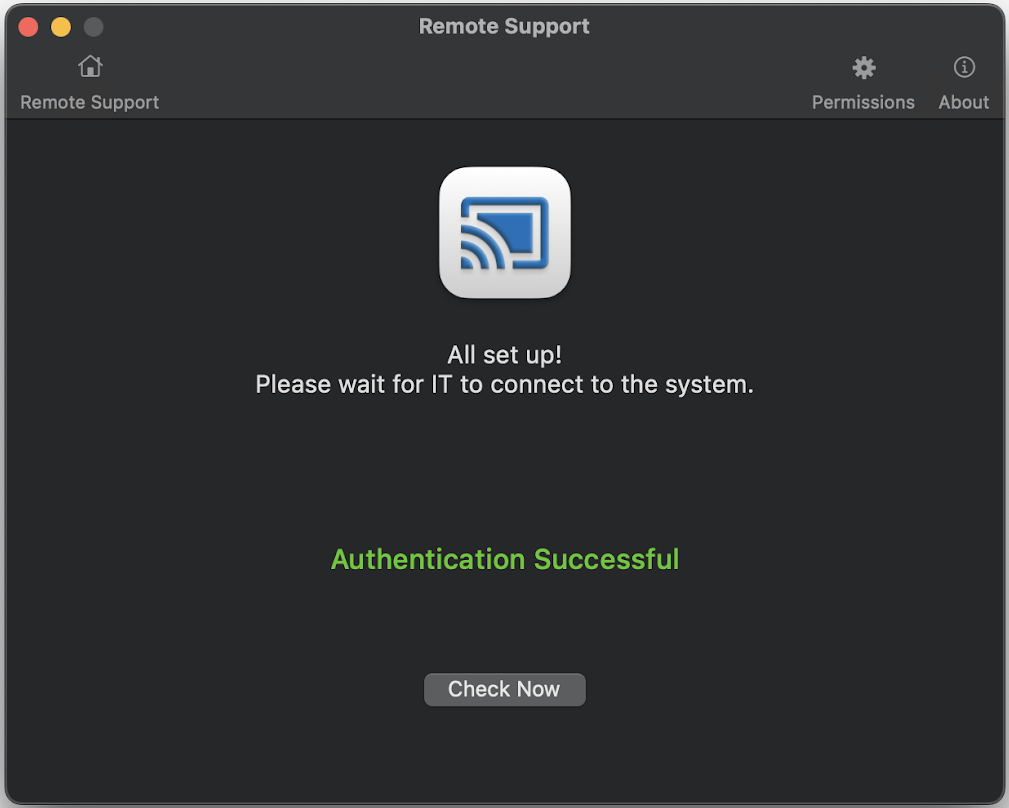
Remote File Management
Remote Support feature allows you to download and/or upload files from your managed macOS devices. The File Sync feature allows the admin/group admin to push a file from their system to a connected device and/or pull a file from a connected device to their system even when a remote cast session is not initiated.
File Sync can be performed in two ways:
When remote session is initiated: In this case, you need to go to File Directory tab to access the remote machine's file directory.
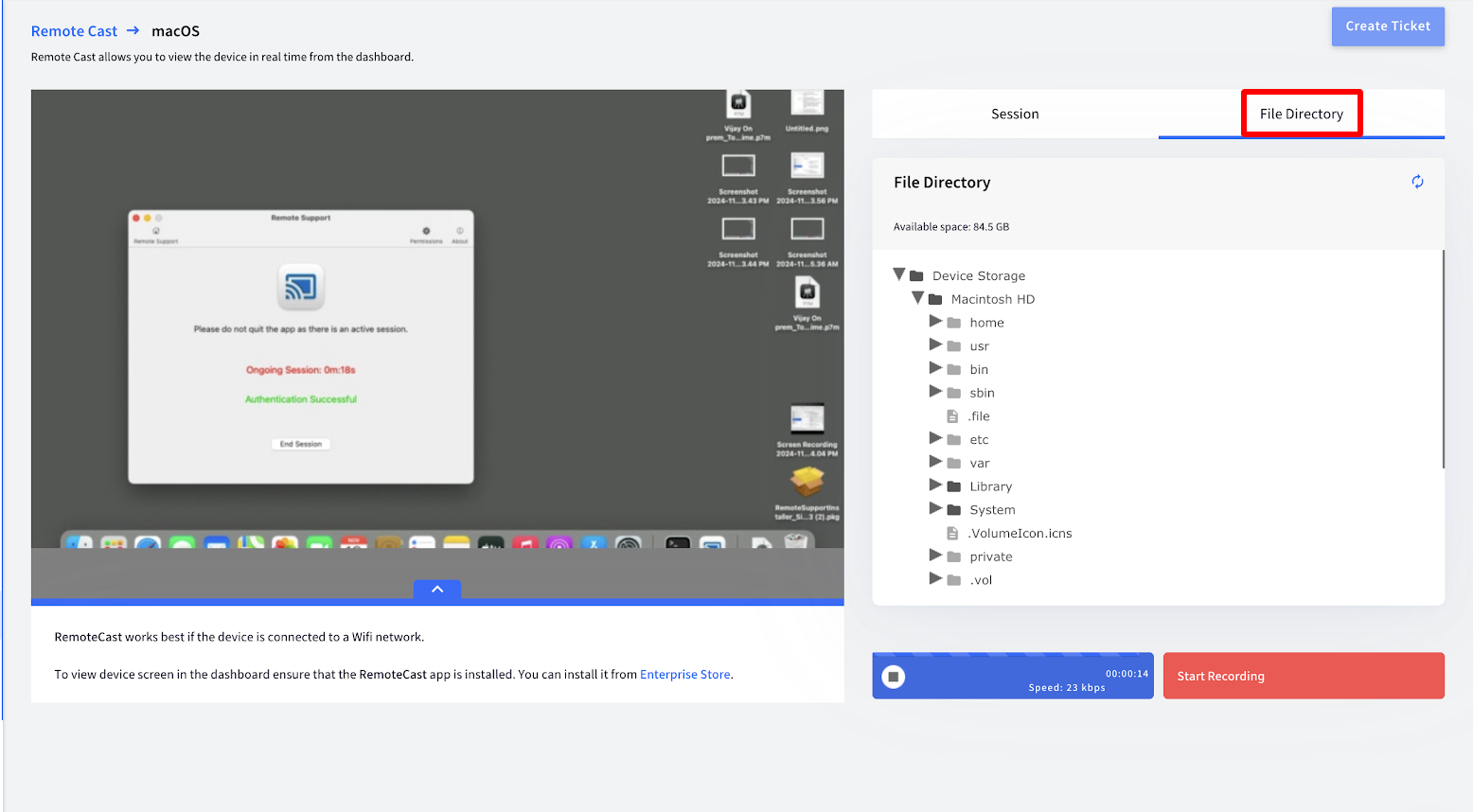
When remote session is not initiated: In this case, click on the Start File Sync button which is next to the Start Session button.
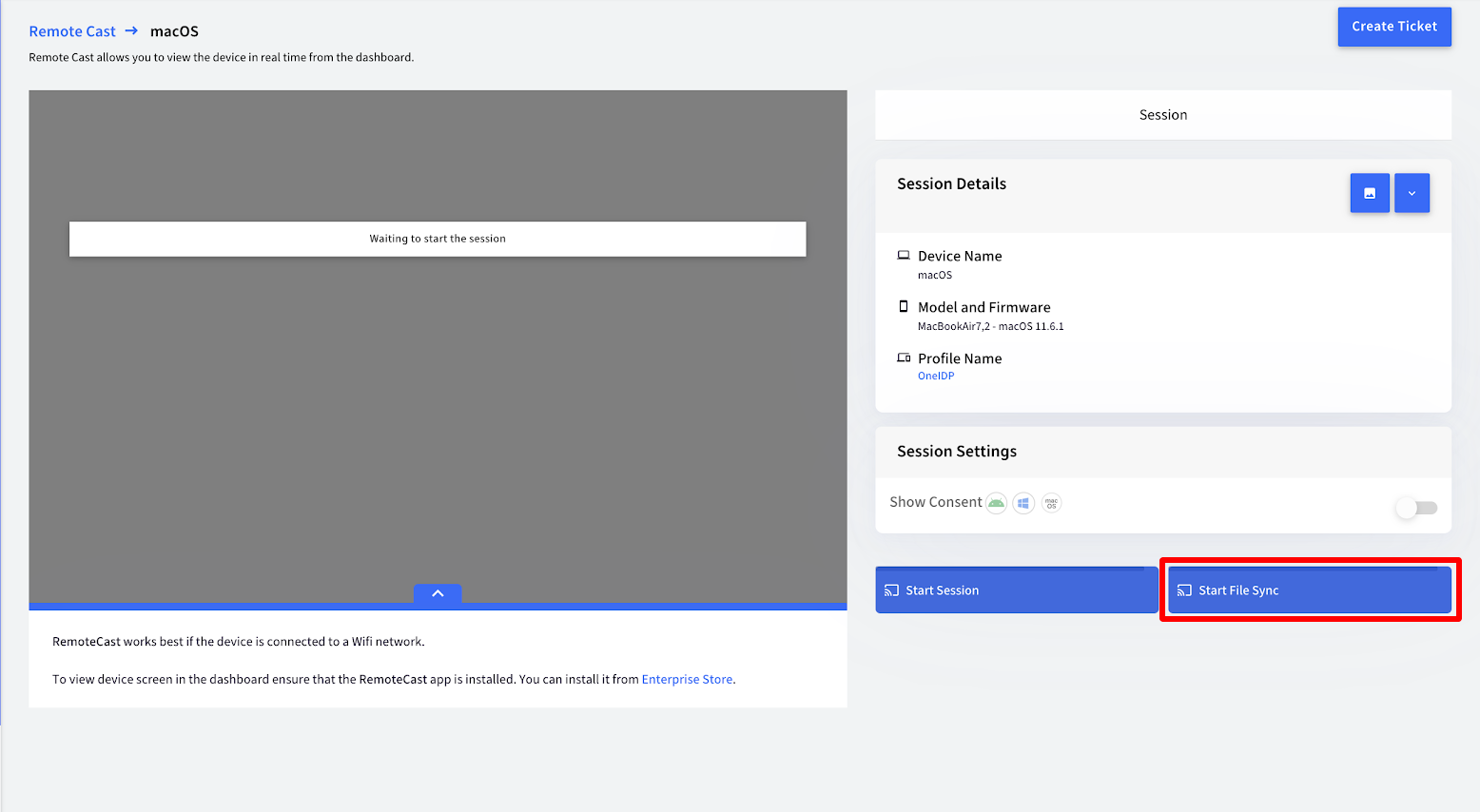
This will establish a connection with the device and show its File tree structure on the dashboard. Now you can transfer files to and from the device.
Note: System/Hidden folders are also visible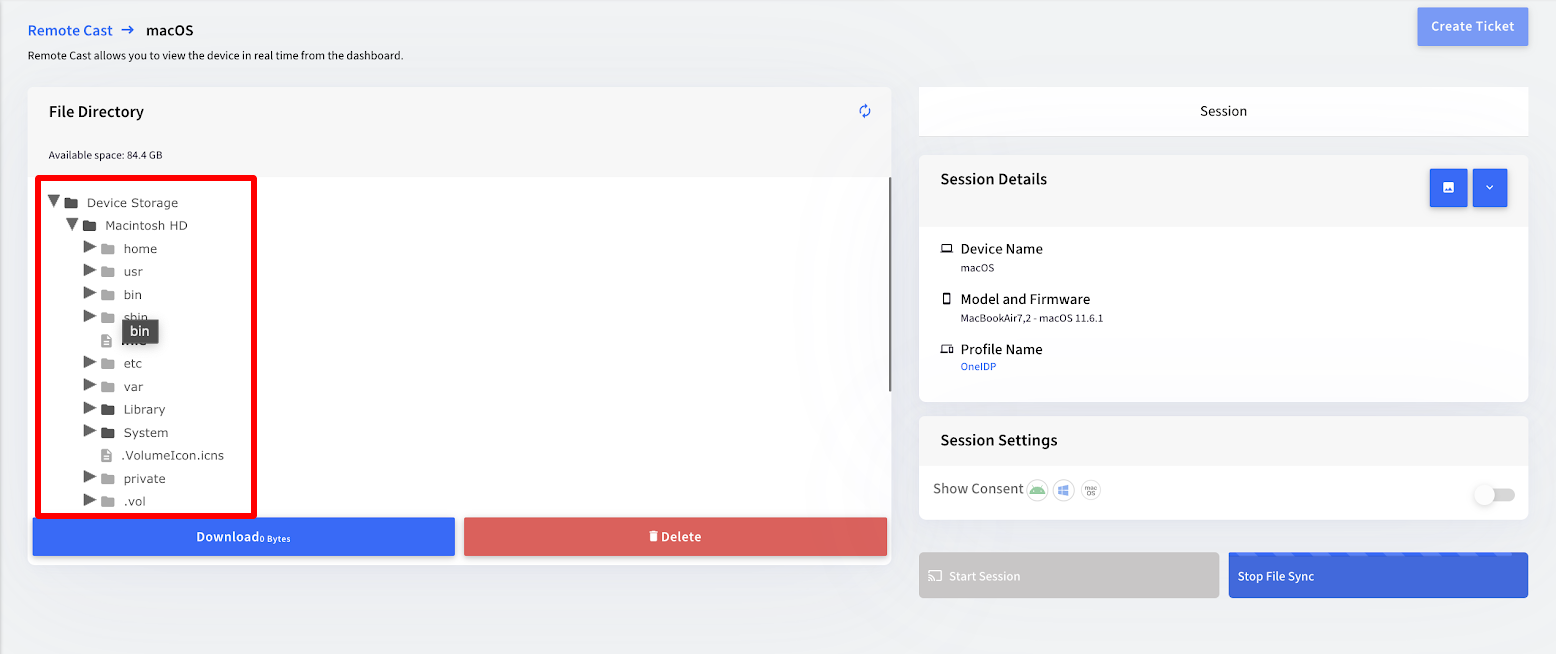
The files and folders present on the remote device will be visible when you expand the Device Storage folder on the top
Upload a File
File(s) can be uploaded from your system onto the remote device using Upload. Please follow these steps to do so:
Click on the folder in which you want to transfer the file and then click Upload
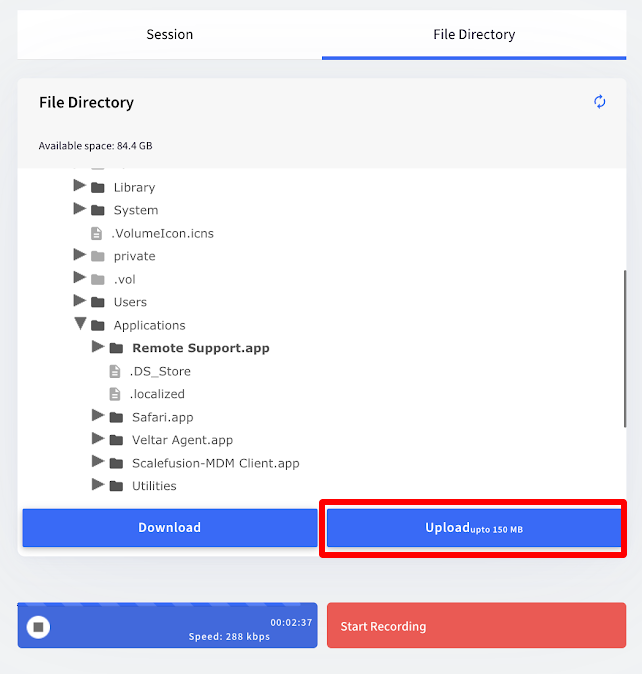
Browse and select the file you want to transfer on the device.
The file will start reflecting on the remote device.
Download a File or Folder
With the File Sync feature, the admins can also download file(s) or folder(s) from the remote device to your system. Please follow these steps to do so:
Click on a file/folder name that has to be downloaded from the remote device to your system. For eg. You want to download an image from your device's Screenshots folder. For this, click on the Screenshots folder in the tree structure and then select the image to download. Then click Download.
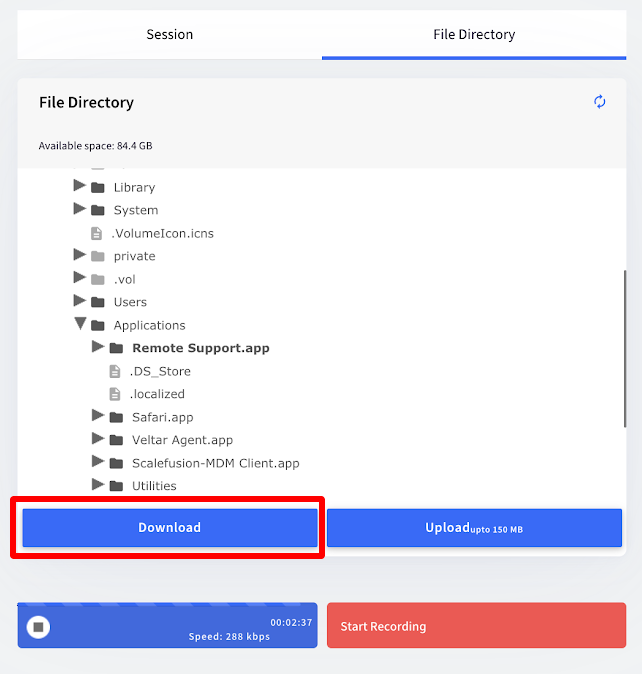
The file/folder will start downloading on your system and will be placed inside the Downloads folder.
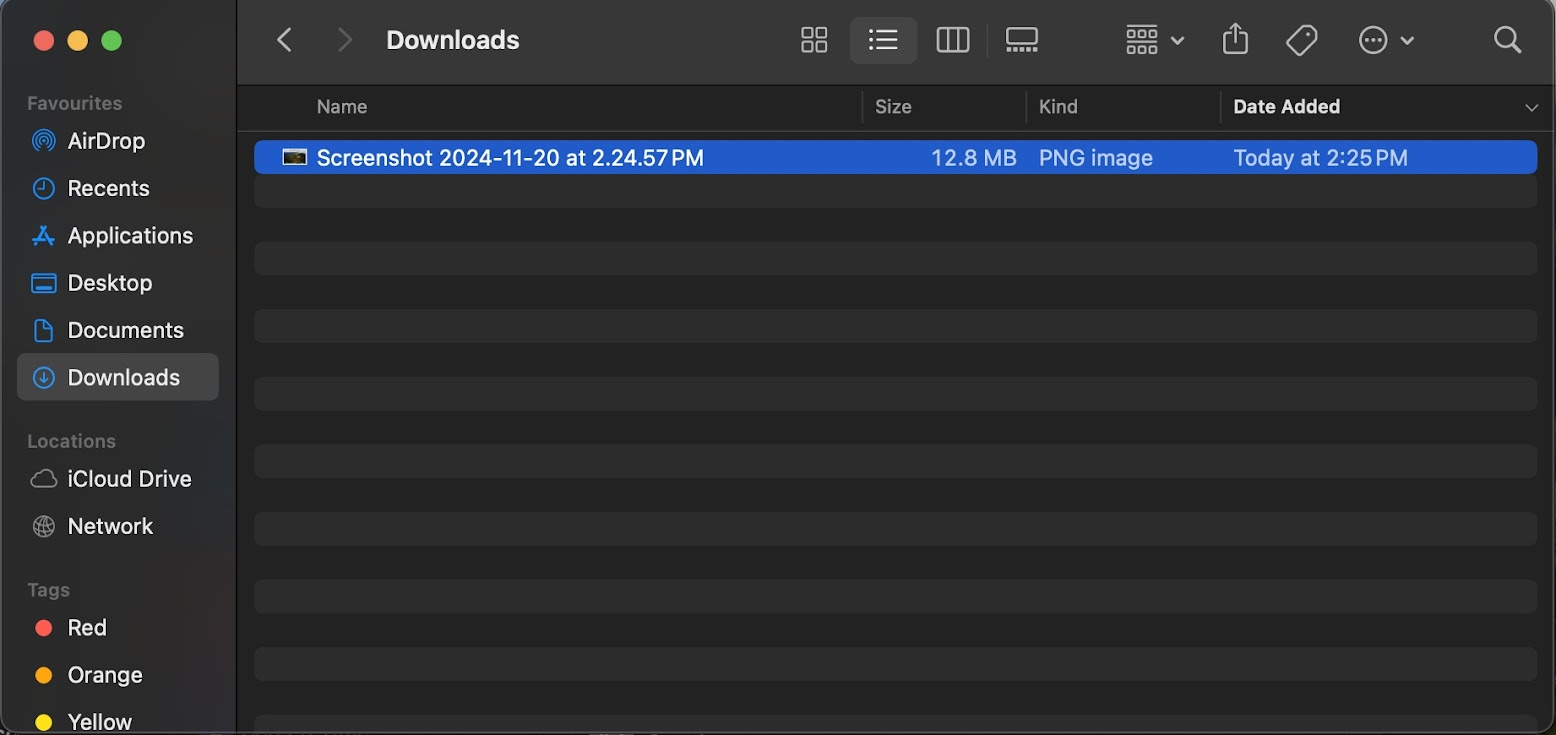
A folder gets downloaded in zip format, and if a folder has sub-folders, they are also downloaded.
Deleting a File
To remove any file from your device, simply select the file and click the Delete button
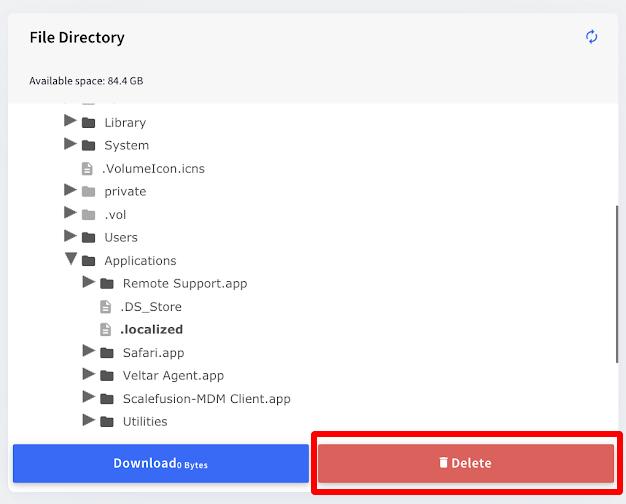
You will get a confirmation box. Click Delete on it.
The file will be removed from your device.
Points to Note on File Sync
Upload: You can only upload files and not folders. Also multiple files cannot be uploaded at the same time.
Delete: You can only delete files and not folders. Also multiple files cannot be deleted at the same time.
You can neither delete nor download entire Volume (like Macintosh HD)


